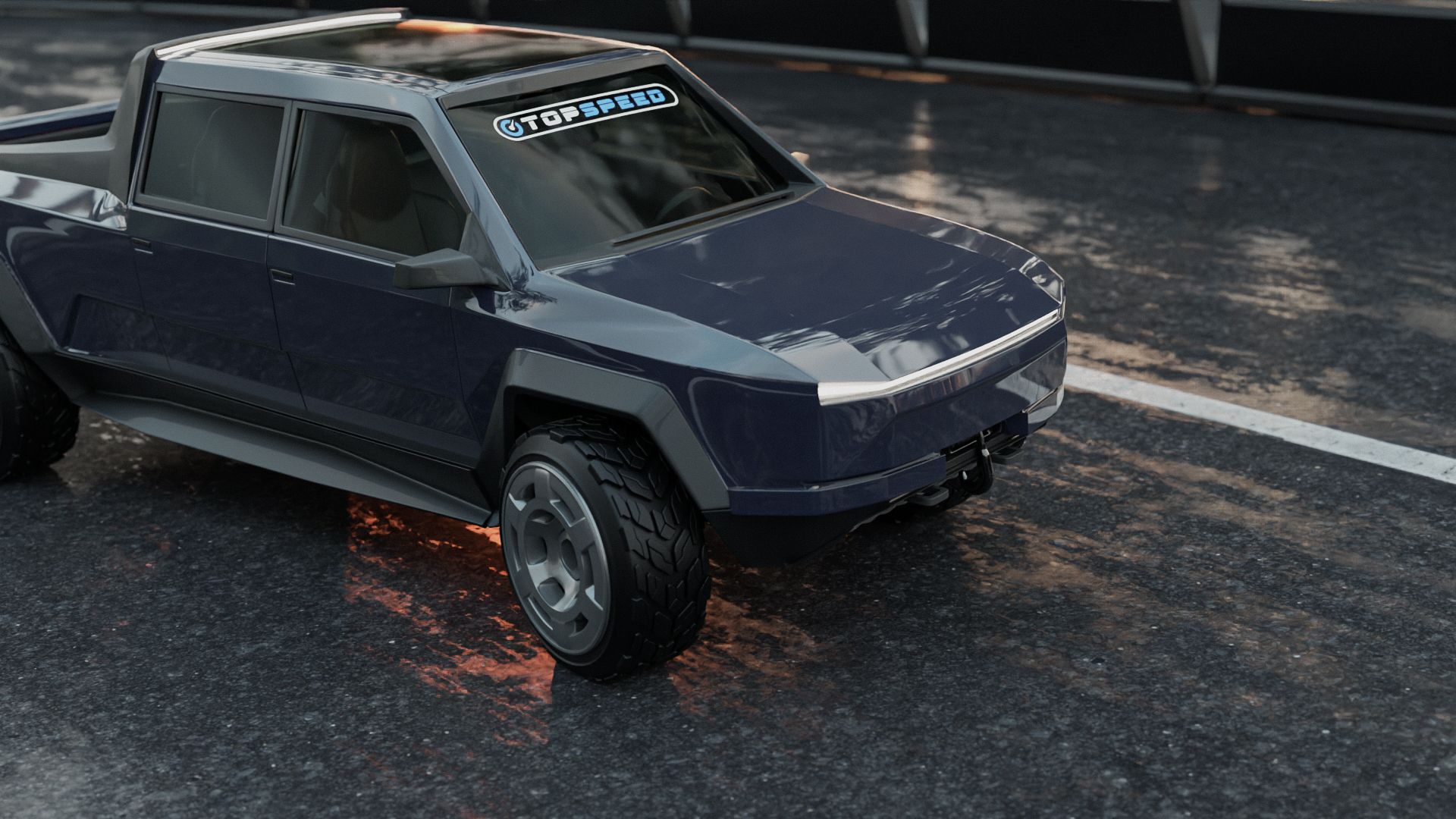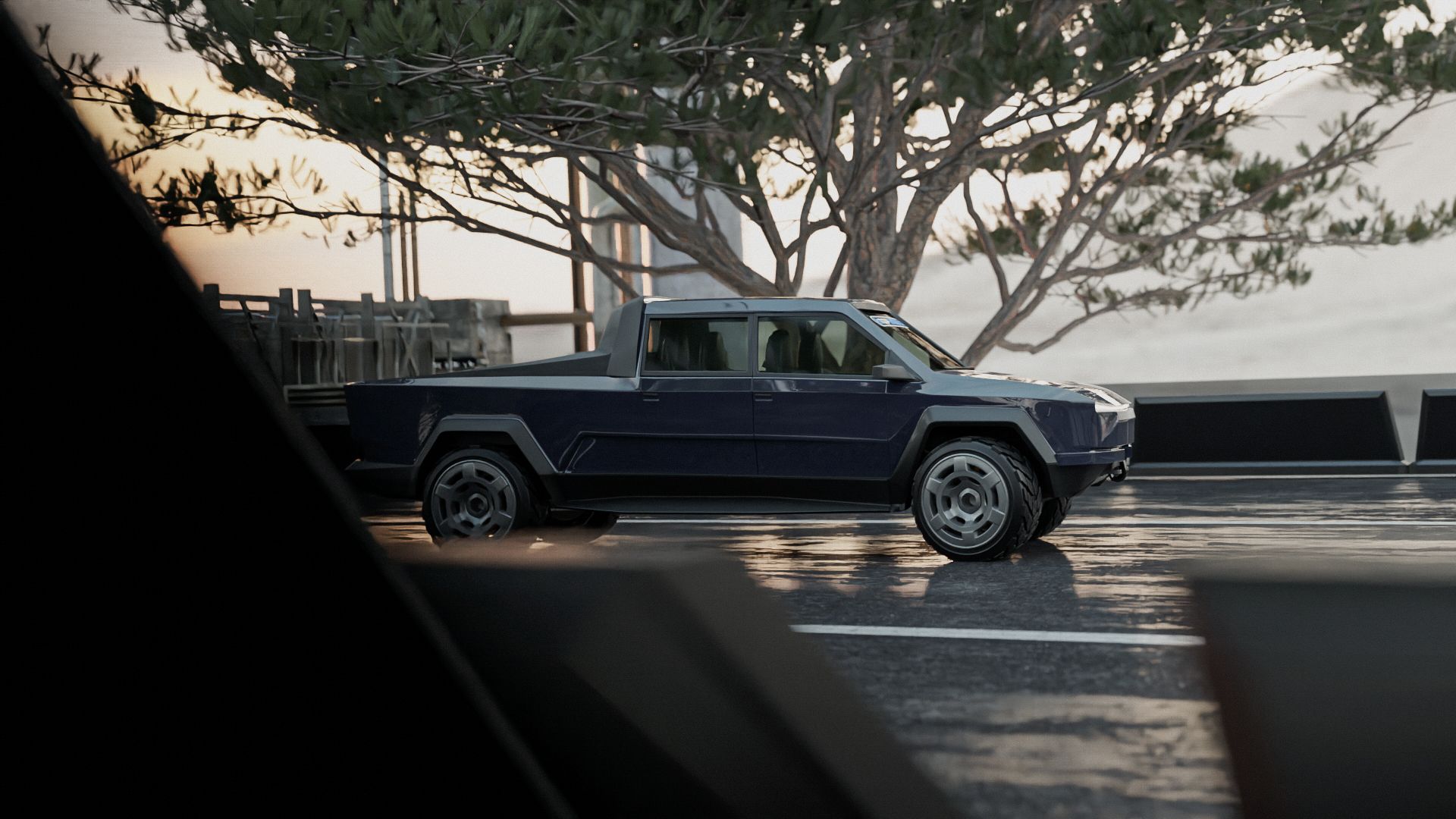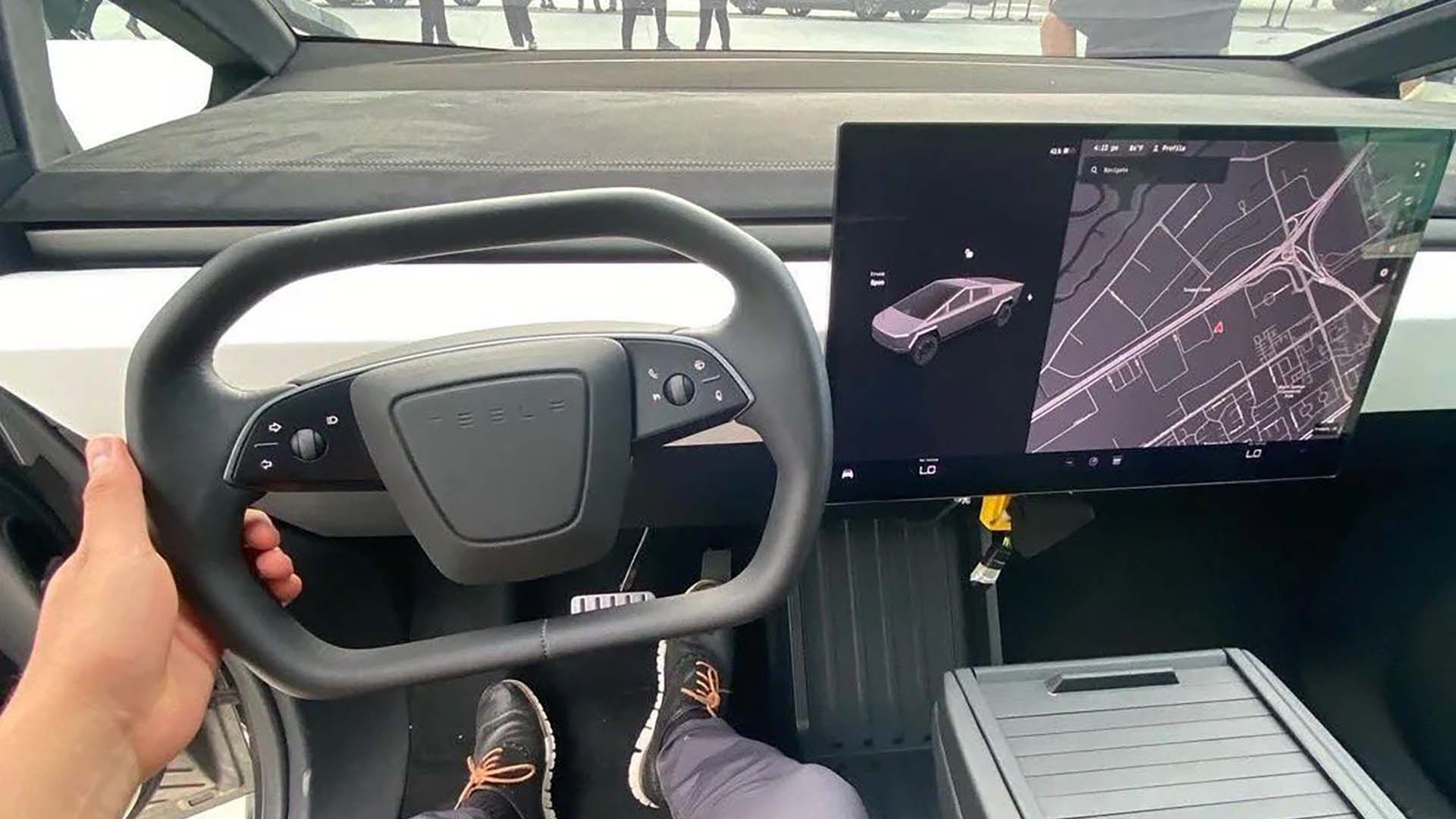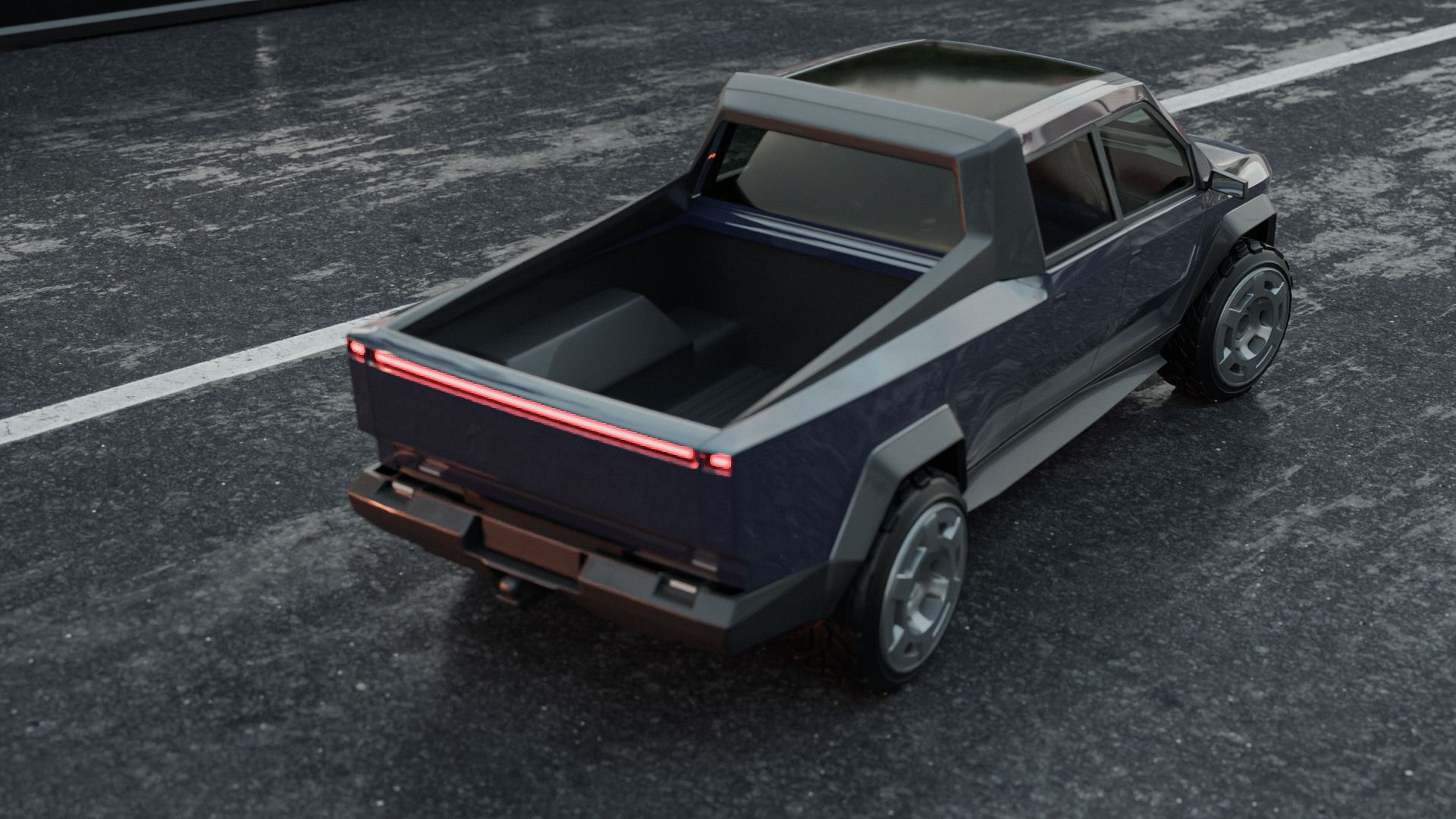Summary
- Tesla's electric vehicle sales are soaring, making it a mainstream manufacturer with the Model 3 and Model Y leading car sales in the U.S.
- Renderings of a conventional three-box silhouette for the Cybertruck show improved practicality and cargo flexibility compared to the original triangular design.
- Opting for a non-stainless steel body could have sped up the Cybertruck's production, but the unique design and appeal of stainless steel are selling points for some customers.
Tesla is having a blast at the moment. Its electric vehicle (EV) sales are at an all-time high as of the moment thanks to the "price war" it initiated, and that's despite the fact that the company hasn't launched a new vehicle in years. To further add to the good news, a number of automakers have pledged to adopt Tesla's charging port standard, which is now called the North American Charging Standard (NACS). Tesla is pretty much a mainstream manufacturer at this point since the Model 3 and Model Y are now some of America's best-selling cars overall. The only thing missing for Tesla to further reach mainstream status is for the heavily-delayed Cybertruck to finally head to production.
A Cybertruck Without Its Distinct Triangular Shape
But, what you're about to see here is a Tesla Cybertruck that you most likely already imagined, but you probably didn't ask for. That's because the Cybertruck you see here has ditched the triangular silhouette of the near-production prototype. Instead, this electric pickup has gone for a more conventional three-box silhouette. These digital renderings are courtesy of Yasid Design for TopSpeed, which perfectly illustrates a Cybertruck that looks... normal. Perhaps it looks so normal that it manages to stand out even in a sea of sleek pickups with three-box silhouettes.
In its quest for normality, the Cybertruck literally looks like a square now, but that introduces a host of advantages. First of which comes in the form of practicality. The boxy shape enables for better interior space utilization, since there's no more sloping roofline that eats into headspace. There's also the matter of bed flexibility since the triangular shape of the Cybertruck limits the type of cargo you could haul. The triangular roofline means that the shape must flow through the sides of the bed, thus preventing owners to utilize the edges of the bed to fit odd-shaped items. Likewise, this makes the bed harder to access from the sides with the triangular body.
With its pursuit of normality, the rendering still manages to keep a few Cybertruck design quirks to retain its identity. These include the full-width LED light bar on both the front and rear fascias, as well as the angular fender flares. The bed also contains a sports bar of sorts, in which another full-width LED light bar mounted on top acts as an auxiliary light when going off-road.
Goodbye, Stainless Steel Skin
Its paint finish also looks surprisingly normal, and there's a perfectly good reason for that. The Cybertruck you see here has also ditched the cold-rolled stainless steel panels of the near-production model--opting instead for conventional high-strength steel with painted panels. Though Tesla didn't explicitly reveal the cause of the delays, we highly predict that the stainless steel panels are a major contributor to this.
There's a perfectly good reason why stainless steel has never been used in mass-produced vehicles. Stainless steel is stronger than conventional steel and thus is resistant to dents (hence Elon Musk's sledgehammer demonstration). But it's also that reason why it's a pain for automakers to use it in cars. Stainless steel is also hard to form into complex shapes or curves, and this is why the Tesla Cybertruck's panels are very flat. The last vehicle to be built with this material is the DMC DeLorean, and since then, there has been no stainless steel vehicle apart from this Cybertruck.
If Tesla pushed through with a non-stainless steel Cybertruck, it would've probably brought the truck to market at a much faster rate. Then again, the unique properties of stainless steel are part of the appeal of the Cybertruck, and are even a selling point to those who ordered one. Ditto its triangular shape, because there's no way you will mistake the Cybertruck for any other vehicle.
Will The Boxy Shape Affect Range?
There's another downside to having that boxy shape--aerodynamics. The Tesla Cybertruck--despite its sloped, triangular shape, still isn't what you would call a sleek pickup. That tall front end will significantly affect its aerodynamics, and based on unofficial third-party testing through software, it has a drag coefficient of 0.39 Cd. That's good for a pickup, since it's much lower than the F-150 Lightning's 0.44 Cd, but still higher than the Rivian R1T's claimed 0.30 Cd. If the Cybertruck went for an angular three-box shape, it will probably be less aerodynamic than the F-150 Lightning, since the windshield isn't as curved and as sweptback as its more mainstream rivals.
Speaking of range, Tesla claims range estimates of 250 to 620 miles, but with this triangular Cybertruck. If Tesla opted for this traditional three-box shape, its range could drop to around 500 miles. Still impressive considering that the Silverado EV can do up to 450 miles according to the EPA. For reference, this is how the Cybertruck (the triangular one, of course) currently fares compared to its competition.
Tesla Cybertruck | Ford F-150 Lightning | Chevrolet Silverado EV | Rivian R1T | |
MSRP | $39,900 (2019 announcement) | $49,995 | $74,800 | $73,000 |
Horsepower | 805 hp (Tri-Motor) | 425 - 580 hp | 510 - 664 hp | 533 - 835 hp |
Torque | TBA | 775 lb-ft | 615 - 785 lb-ft | 829 - 908 lb-ft |
Battery Size | TBA | 98 - 131 kWh | 200 kWh | 105 - 180 kWh |
Range | 250 - 620 miles | 230 - 320 miles | 400 - 450 miles | 270 - 400 miles |
0-60 MPH | 6.5 - 2.5 sec. | 4.1 - 3.8 sec. | 4.5 sec. (RST only) | 4.5 - 3.0 sec. |
Max Towing | 15,000 lbs | 10,000 lbs | 10,000 lbs | 11,000 lbs |
What Will Its Interior Look Like?
Unfortunately, these renderings only reveal what a conventionally-designed Cybertruck could look like from the outside. From the inside, Tesla wouldn't need to completely redesign the interior based on what we've already seen. After all, what was only changed is from the window line and up, but not the lower portion of the cabin. Therefore, expect the same minimalist interior layout with a clear lack of buttons and everything is controlled through the main infotainment system. If anything, the angular shapes of the interior would perfectly match the Cybertruck's boxy exterior design.
What will alter though is its interior visibility. The triangular shape means thick C-pillars that affect visibility as well as reduced headroom based on where the roofline starts to taper downward. The cab-forward layout also means that the A-pillars are pushed forward and near the front axles. Depending on how the pillars were designed, this could negatively affect visibility, but a conclusion can only be formulated if I've actually driven a Cybertruck. By having a conventional design, the Cybertruck's visibility will drastically improve. Boxy cars tend to have excellent visibility, and this digitally-rendered Cybertruck is no exception.
Will A Three-Box Cybertruck Dominate The Market?
The question now is, would you buy the Tesla Cybertruck if it looked like this? Well, the triangular shape of the Cybertruck certainly isn't to everyone. It's either you absolutely love it or absolutely hate it to bits. By opting for a traditional three-box shape, the Cybertruck will lose its primary design distinction, but it's probably a move that will broaden its appeal. Combined with the fact that the Cybertruck is, well... a Tesla, the fanfare surrounding this pickup will undoubtedly be huge. Only this time, it'll probably now attract a wider and more mainstream audience and probably put the F-150 Lightning and Silverado EV to the grave.




